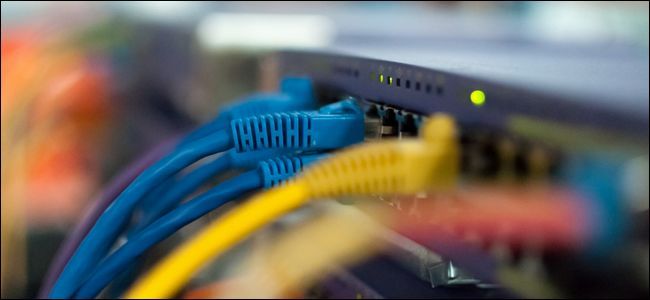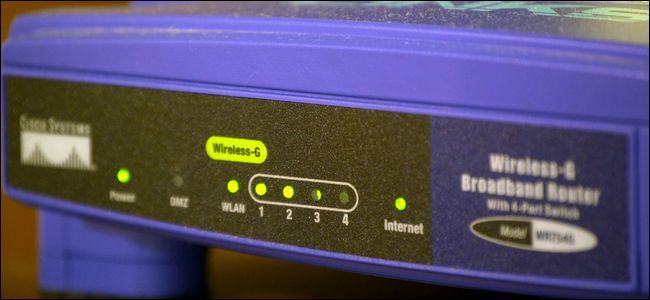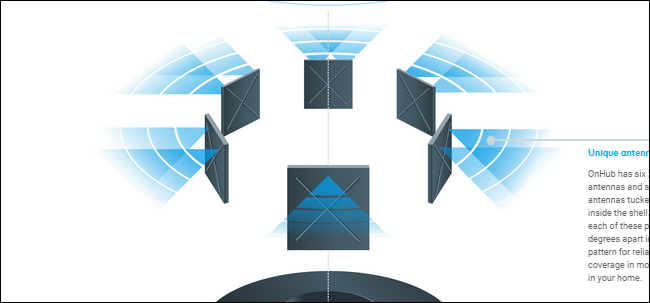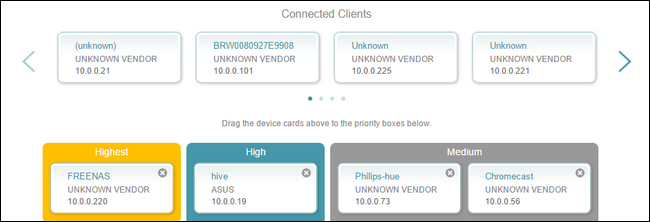Quick Links
Many people have the attitude that it doesn't matter if their router is older because their phone, laptop, or other wireless gear isn't cutting edge anyways. Even if you don't have brand new tech toys you still benefit from upgrading a dated router.
Why Would I Want to Do This?
Routers are the oft-ignored work horses of the home network. Most people hardly pay any attention to them unless there is a big malfunction, and people may not consider upgrading them any more than they consider upgrading their washing machine.
Unfortunately, this leads to a situation where the important-but-ignored router ends up being a source of degraded internet connection quality and a diminished user experience for everyone on your network. Upgrading to a current generation router is a cheap and effective way to improve your home network in every way: better Wi-Fi range, stronger signal, and better handling of demands modern users put on their network. The last thing you want in the age of Netflix is a router design from the days when Netflix was synonymous with DVD rentals.
If you're worried about the cost of upgrading, don't be. You don't have to run out and drop $300 on a flagship router to make a real difference in Wi-Fi performance (but make no mistake those flagship routers are pretty awesome). There are plenty of mid-range routers sporting current generation technology that are light years ahead of old routers.
Let's take a look at when you want to consider upgrading and then how you'll benefit from the upgrade.
When It's Time to Upgrade
Although there is no way for us to assess the situation of every reader and give them a tailored recommendation, you can use these general guidelines to consider if an upgrade is the right move for you.
First and foremost: are you experiencing frequent symptoms of an under-powered or overwhelmed router? If you can't get a Wi-Fi signal everywhere in your home (and have considered getting a Wi-Fi extender or a second router), that's a good indicator you're a good candidate for an upgrade. If you frequently have network-related congestion issues, like slow web page loading or stuttering video playback, that can't be chalked up to a slow broadband connection then it's a good sign that your router isn't up to the task of serving everyone in your household.
Second, was the router a freebie? If it was supplied by your ISP (whether as a router/modem combo or a stand-alone unit) there's a good chance it's not up to snuff. ISPs aren't in the business of handing out extremely high quality routers, and generally speaking most modem/router combination units are junk.
Even if you aren't noticing problems, you should also consider the age of your router, too--both in terms of the actual age of your physical device and the age of the particular model. You might have bought the router two years ago, but if the model itself is from 5 or more years ago, there's a good chance that you're playing with outdated router tech and could benefit greatly from upgrading. If you're still using a single radio/band Wireless-G router from 2010 or before, for example, you're essentially using a bicycle when you could be using a spaceship.
Finally we want to emphasize: even if you aren't rapidly (or at all) adopting devices that can support the newest Wi-Fi standards like 802.11ac, you can still benefit an upgrade as newer routers are optimized in ways that benefit older equipment too.
The Many Benefits of a Newer Router
We can't promise you'll reap every single benefit on this list from a router upgrade, but for anyone sporting an old or cheap ISP-supplied router, you can expect to reap many of them.
One thing we'd like to highlight before diving into the list is that many of these benefits apply to both wired and wireless connections. While Wi-Fi is what most people are interested in, thanks to the abundance of Wi-Fi devices in their homes, things like improved quality of service rules and newer hardware give Ethernet connected devices a leg up just like their Wi-Fi siblings.
Multiple Bands Decrease Congestion and Interference
Any router that supports newer standards will be, by default, at least a dual-band router. Older standards like 802.11b and 802.11g use the 2.4GHz band. Newer standards like 802.11ac use the 5GHz band (and some premium routers include two 5GHz bands, a little network magic trick that relies on using two distinct chunks of the 5GHz spectrum).
At the bare minimum you'll benefit from having one band for your older gear and one band for your newer gear that can support 5GHz communication (even if you don't have any 5GHz stuff yet you'll still have a nice wide open space for it when you upgrade).
For power users, a combination of multiple bands plus multiple radios does wonders for network congestion and overall performance. What causes this network congestion everyone complains about? While you can contribute to it simply by having tons of Wi-Fi devices on your network there are also external factors at play. The 2.4GHZ band is chock full of stuff. Not only do many of the communication channels in the 2.4GHz spectrum used by routers overlap each other, but the same chunk of the radio spectrum is used by many cordless phones, baby monitors, wireless security devices, and more. Decreasing the load on your 2.4GHz network and putting some of it on the 5GHz network goes along way towards alleviating congestion problems.
Multiple Radios Offer Better Coverage
Paired with multiple bands, multiple radios are the biggest performance booster around. Don't confuse radios with bands: the radios are the physical bits inside the router and its antennas that send and receive data. The bands are the portion of the radio frequency they can do so on. Think of each band like a totally separate highway and each radio like a lane on that highway: the more lanes the better.
To use a recent example, Google's OnHub router is a dual-band router (it uses 2.4GHz band and a single 5Ghz band) but it has 6 radios devoted to the 2.4GHz band and 6 radios devoted to the 5Ghz band.
When you have multiple people in your household streaming Netflix, playing games, and browsing the web, an abundance of radios ensures that traffic is spread across the router hardware and nobody is experiencing dropped connections or lag.
Better Range Across Your House
Thanks to a combination of dual radio bands, multiple radios, and improved hardware, newer routers of have better coverage. Wi-Fi has absolutely matured from it's infancy in the 2000s, and modern Wi-Fi routers are better designed on all fronts for a bustling household with dozens of Wi-Fi devices.
While a user in 2006 might have thought it was cool to sit on their couch without an Ethernet cord plugged into their laptop, the user of today wants to sit on the couch, in a tree house, on the edge of their property half an acre from their home office, and still get a rock solid Wi-Fi signal.
Router designs reflect that, and the mid-to-premium routers of today are designed to give you a solid signal so you can check your email while you're at the end of your long driveway checking your real mail.
User-Friendly Interfaces
Router interfaces used to be downright awful. If you weren't a really proficient geek or an outright network engineer, then changing any settings was difficult (let alone making sense of them). Thankfully, over the last few years the settings interface of routers from major companies like D-Link, Netgear, and ASUS, has radically improved.
You may think you'll never use it, but you'd be surprised. Instead of just plugging it in and going "Well, it works!" and then never touching it again, you might actually find yourself browsing through the menus and using the specialty features.
Specialty Features
Speaking of those specialty features, newer routers typically come with a wide range of specialty features that were either outright missing from older models or were there but so arcane and difficult to access that nobody bothered.
On modern routers, it's usually pretty easy to set up Quality of Service rules (so that certain devices and/or applications on your network get bandwidth preference to ensure smooth operation), set up "bedtime" enforcement where certain devices can't access the internet during homework or bedtime hours, enable guest networks for visitors, or even attach USB hard drives for dead-simple Network Attached Storage to store file backups, family photos, or other personal files.
The laundry list of specialty features, on even a mid-range modern router, is packed with things that were practically unimaginable on a routers released years ago.
Updated Software
Every device eventually reaches what the manufacturer considers its end-of-life phase. At that point, the device is downgraded to either having only critical security updates or (in most cases) it just isn't upgraded at all. Anyone who has looked for drivers for an old laptop, scanner, or other piece of aging hardware has certainly run into this problem.
Routers certainly aren't immune to it, either. As time goes on, not only is your router lacking in the hardware department, but it might also be lacking in the software department as updates become fewer and farther between. At best, that deprives you of new and useful features, and at worst it could leave your router vulnerable to security flaws and exploits.
As a final note on software: If you're inclined to flash custom firmware to your router to gain additional features your best bet is to check out the newest hardware supported by the firmware project you're interested in. Just like manufacturers will retire hardware and phase out support for it, the custom firmware for older routers eventually reaches a stable end-of-life release; if you want the new wiz-bang features you'll need the new wiz-bang hardware to go with it.
If your router is long in the tooth or the freebie your ISP tossed at you, there's no better time than the present to upgrade and take advantage of the new developments in router tech.
Image courtesy of Norlando Pobre, Webhamster.





